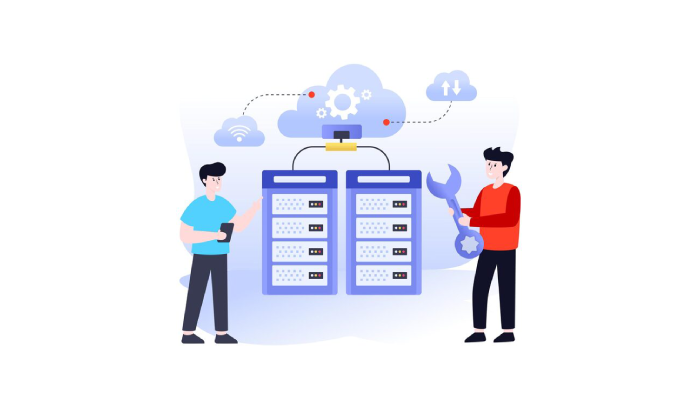In today’s digital-first business environment, seamless online experiences are no longer optional—they are essential. Whether your organization relies on e-commerce, cloud applications, or enterprise services, any downtime or slow performance can directly impact revenue and customer satisfaction. That’s where HPE Load Balancer comes into play, offering businesses an advanced solution for distributing traffic, optimizing application performance, and ensuring uninterrupted service. If you haven’t considered implementing an HPE Load Balancer yet, here’s why your business needs one today.
What is an HPE Load Balancer?
An HPE Load Balancer is a networking solution designed to distribute incoming network traffic across multiple servers or resources to ensure optimal performance and reliability. In simple terms, it acts as a traffic director, ensuring that no single server becomes overwhelmed, which helps prevent downtime and slow responses.
Unlike basic load balancers, HPE’s offerings are built for enterprise-grade applications. They combine intelligent traffic management, robust security features, and high availability, making them suitable for businesses that require uninterrupted, high-performance digital services.

Key Benefits of an HPE Load Balancer
1. Improved Application Performance
Performance is a critical factor for any business. Websites, applications, and cloud services must respond quickly to user requests. An HPE Load Balancer ensures that traffic is intelligently distributed across multiple servers. This reduces latency, prevents server overload, and maintains consistent response times even during peak usage periods.
For example, during high-traffic events like online sales, promotions, or product launches, your infrastructure can struggle to handle sudden spikes in requests. HPE Load Balancers help prevent slowdowns and ensure users enjoy a seamless experience.
2. High Availability and Redundancy
Downtime can be costly for businesses. Every minute of unavailability may result in lost revenue, reduced customer trust, and reputational damage. HPE Load Balancer enhances business continuity by providing high availability and failover mechanisms.
If a server fails, the load balancer automatically redirects traffic to healthy servers without any disruption to the end user. This redundancy ensures that your applications remain accessible even during hardware failures or maintenance periods.
3. Scalability for Growing Businesses
As businesses grow, so do their digital infrastructure needs. One of the standout advantages of implementing an HPE Load Balancer is its ability to scale seamlessly. Whether your business is expanding its user base, adding new applications, or increasing cloud services, HPE Load Balancers can adjust traffic distribution accordingly.
By enabling horizontal scaling—adding more servers without impacting performance—you can support business growth while maintaining optimal application speed and reliability.
4. Enhanced Security Features
Cybersecurity threats are becoming increasingly sophisticated. An HPE Load Balancer isn’t just about performance; it also contributes to your security posture. Many HPE solutions integrate features like SSL offloading, DDoS protection, and application firewall capabilities.
SSL offloading allows the load balancer to manage encryption and decryption tasks, freeing up server resources while ensuring secure communication. Meanwhile, integrated security features help detect and mitigate malicious traffic before it reaches your servers, protecting sensitive business data and maintaining compliance standards.
5. Simplified Traffic Management
Modern enterprises often run complex, multi-tier applications. Managing traffic to ensure that each application component operates efficiently can be challenging. An HPE Load Balancer simplifies this process with intelligent traffic management capabilities.
Features such as content-based routing and health monitoring allow the load balancer to make real-time decisions about where traffic should be directed. This ensures that your users consistently connect to the optimal server, enhancing both performance and reliability.
6. Cost Efficiency
Investing in an HPE Load Balancer can reduce operational costs in the long run. By optimizing server utilization, businesses can avoid over-provisioning hardware or cloud resources. High availability and failover capabilities reduce downtime-related losses, while SSL offloading and intelligent routing improve server efficiency.
Additionally, by preventing outages and slowdowns, HPE Load Balancers indirectly protect your revenue streams and brand reputation, offering a significant return on investment.
Real-World Use Cases for HPE Load Balancers
E-commerce Websites
For online retailers, website speed and availability directly impact sales. During peak shopping periods, HPE Load Balancers ensure that traffic is efficiently distributed, preventing crashes and slow page loads that could drive customers away.
Cloud-Based Applications
Businesses increasingly rely on cloud infrastructure for their applications. HPE Load Balancers support hybrid and multi-cloud environments, routing traffic intelligently across cloud instances while maintaining high availability and performance.
Enterprise Services
Internal business applications—such as ERP systems, CRM platforms, and email services—require continuous uptime. HPE Load Balancers guarantee that these critical services remain operational, even during maintenance or unexpected server failures.
How to Choose the Right HPE Load Balancer?
Selecting the right load balancer depends on your business needs. Here are key factors to consider:
- Traffic Volume: Assess your peak traffic levels to choose a solution capable of handling spikes efficiently.
- Application Complexity: For multi-tier or hybrid-cloud applications, consider HPE models with advanced routing capabilities.
- Security Requirements: Evaluate whether your business needs integrated security features like SSL offloading or DDoS protection.
- Scalability: Choose a load balancer that can scale with your business growth.
- Management and Monitoring: Ensure the solution offers centralized management, analytics, and real-time health monitoring.
HPE offers a range of load balancing solutions, including both hardware and virtual options, to fit various business sizes and infrastructure architectures.
Implementing an HPE Load Balancer: Best Practices
- Assess Your Infrastructure: Understand your existing servers, applications, and network architecture.
- Define Traffic Policies: Determine routing rules, load distribution strategies, and security policies.
- Deploy in Phases: Start with critical applications to test performance improvements before full-scale deployment.
- Monitor Performance Continuously: Use HPE’s management tools to track server health, traffic patterns, and potential bottlenecks.
- Plan for Growth: Ensure your load balancer configuration can accommodate future expansions and traffic surges.
Conclusion
In a highly competitive digital landscape, businesses cannot afford slow applications, unplanned downtime, or compromised security. An HPE Load Balancer addresses all these challenges, offering high availability, improved performance, enhanced security, and scalability. By intelligently distributing traffic across servers, these solutions ensure that applications remain responsive, reliable, and secure—no matter the demand.




